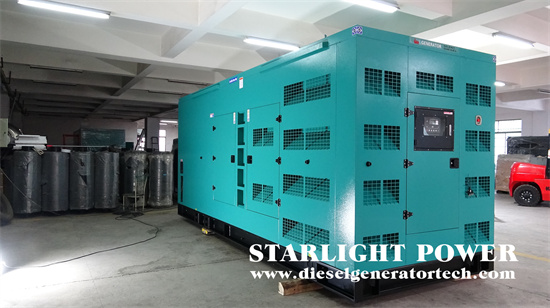Each generator brand has its own oil mist protection system. Its main protection element is the oil mist detector, which can timely detect whether the generator has oil mist formed in the generator crankcase due to excessive air leakage and other faults caused by bearing overheating or piston ring damage, so as to monitor whether the main operating components of the generator, crankshaft and cylinder, work normally. During the operation of the generator, it continuously extracts the oil and gas in the crankcase through the sampling pipeline system and sends them to a sensitive and accurate concentration measuring device.

The photoelectric diode senses the light intensity generated by infrared radiation and converts the generator's light intensity signal into an electrical signal to be sent to the electronic identification device. If the gas in the generator crankcase contains oil mist, the opacity of the measurement channel of the concentration measurement device will increase. Part of the infrared radiation will be absorbed in the measuring tube, causing a decrease in light intensity and therefore a decrease in electrical signals. The higher the concentration, the more the electrical signal weakens. When the electrical signal drops to a minimum limit, the electronic identification device will issue a "high oil mist detector" alarm and shut down. At the same time, the valve box will indicate which part of the fault caused the high oil mist for inspection by maintenance personnel.
Identify the location and different sounds of abnormal noise in the generator, such as the dull sound caused by excessive clearance between the generator main bearings and the crisp sound of the generator valve knocking on the piston. After analysis, it is suspected that the fault caused by that part can cause the part to stop working, observe whether the symptoms disappear, and is generally used to determine whether there is a malfunction in the cylinder. If it is suspected that the fault is caused by a certain component or component, the generator component can be updated and the working conditions before and after comparison can be made. Based on preliminary analysis and judgment, make exploratory adjustments to the diesel engine. If the diesel engine emits smoke, the fuel injection pressure can be tentatively changed or the advance angle can be changed within a small range, and the effect of the changes can be observed.
Jiangsu Starlight Power Generation Equipment Co., Ltd. was founded in 1974 and is one of the earliest manufacturers of generators and diesel generator sets in China. The company has a registered capital of 218.88 million yuan. The company covers an area of 86,000 square meters and a building area of 55,000 square meters. There are more than 660 employees, including 456 professional technicians and 106 senior technicians. It has 46 sales and service outlets nationwide. The main products are diesel engines, generator sets, and diesel generators, providing users with a one-stop service of design, supply, debugging and maintenance at any time. Starlight has always insisted on using first-class talents, building first-class enterprises, manufacturing first-class products, creating first-class services, and making every effort to build a first-class domestic enterprise. If any question please feel free to visit our website https://www.dieselgeneratortech.com/ or send email to sales@dieselgeneratortech.com.
Comments
Post a Comment